


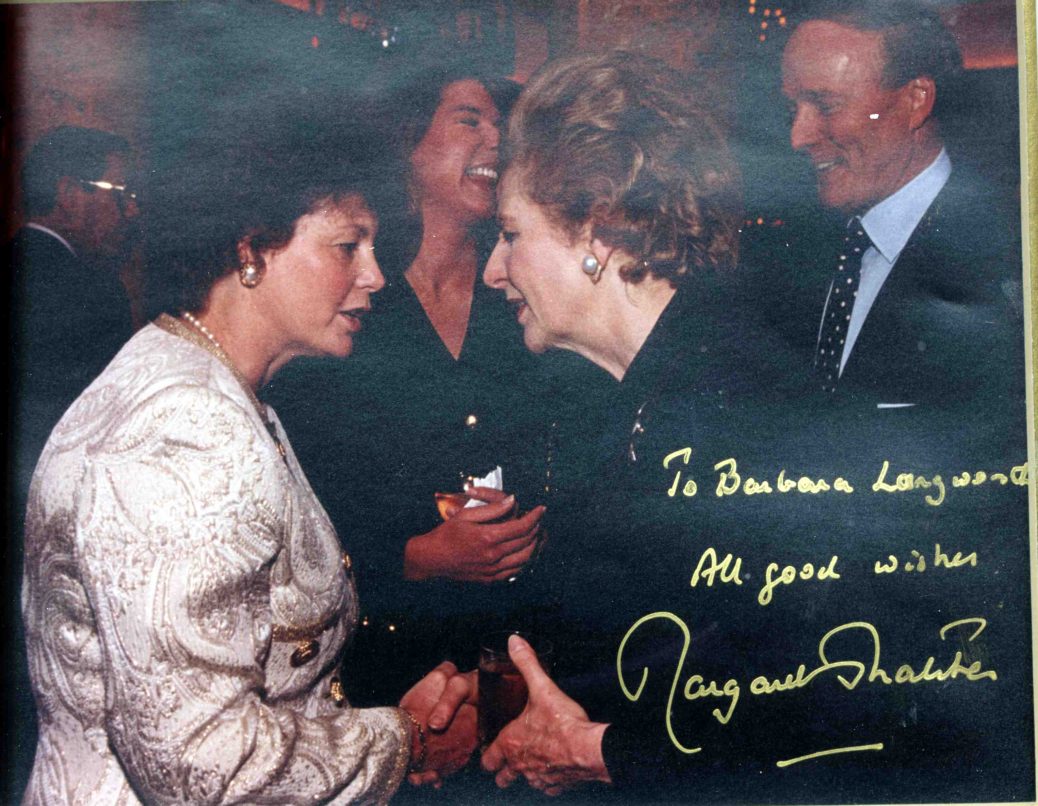
Everyone is familiar with Margaret Thatcher’s career. Everyone depending on their politics will have their own vision. It is left to say here what she meant to the memory of Winston Churchill, the prime minister she revered above all. More than anyone who lived at 10 Downing Street, she had real appreciation for him. She read his books, quoted him frequently, even hosted a dinner for his family and surviving members of his wartime coalition.
In 1993 she was in Washington to coincide with a Churchill Conference hosting 500 people, including 140 students, a dozen luminaries, and ambassadors from Britain and the Commonwealth.…
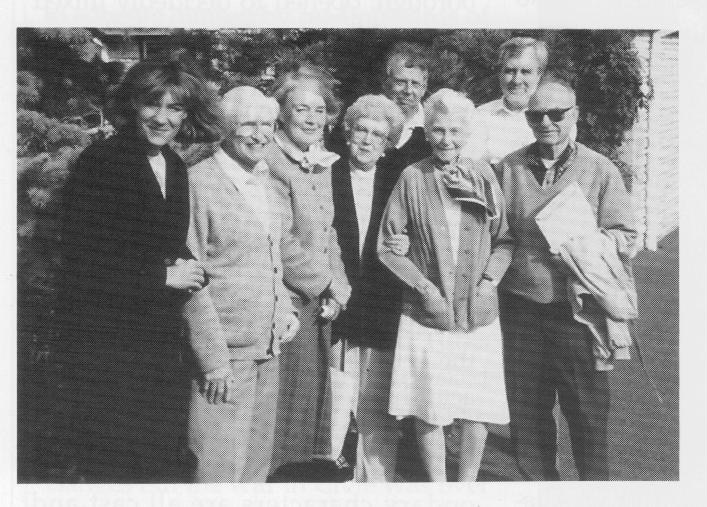
This tribute to an extraordinary Churchillian was written twenty-three years ago in 1997. Please pardon references to contemporary events no longer in the news, though it would seem that some other Redburn thoughts are startlingly relevant.
Ashley Redburn, Anglo-AmericanCynics sometimes suggest that Western Civilization needs a war every few generations to maintain its sense of values and faith in itself. Ashley Redburn was a man who believed it. “England,” he declared grimly, “needs to be conquered in war and occupied by a vengeful enemy before its spirit can be revived. Germany and France between them have ruined Europe for two centuries.…
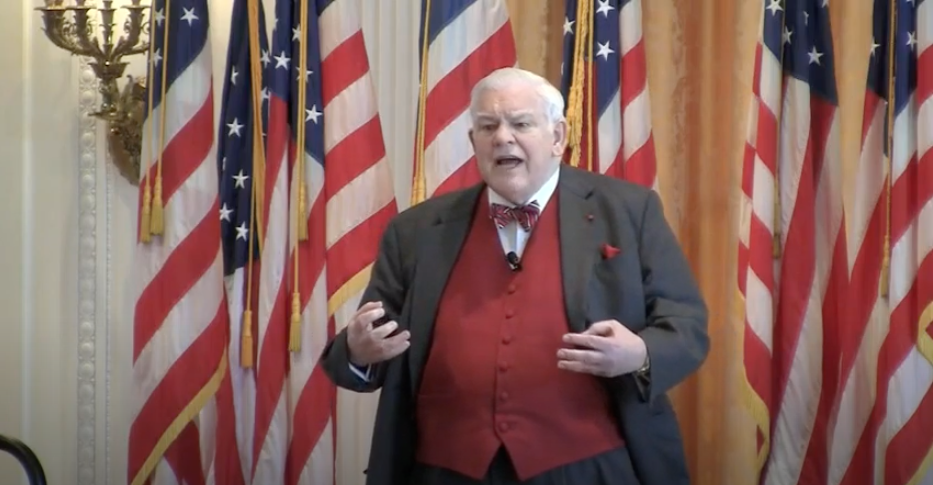
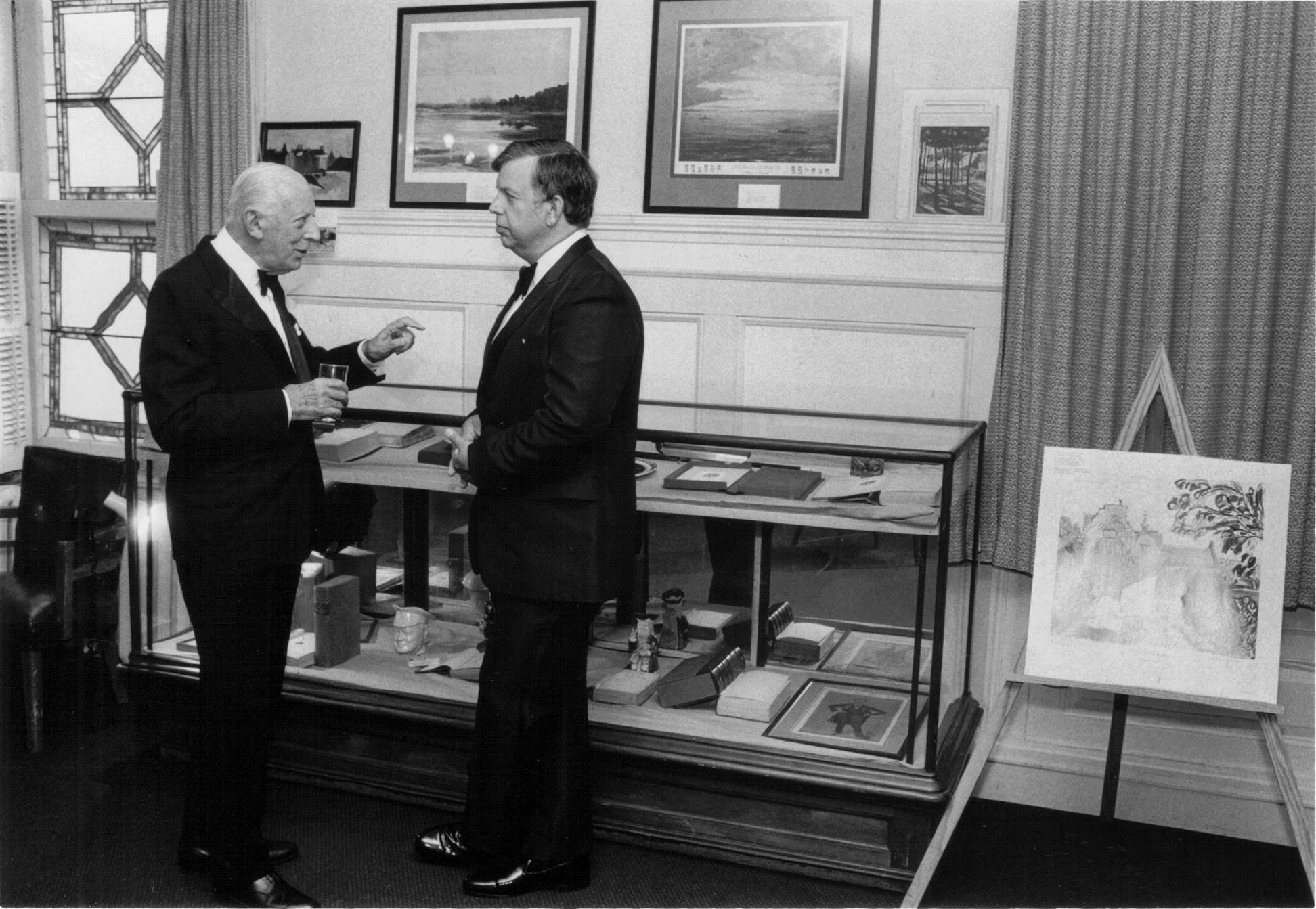
My previous note was about Alistair Cooke on Churchill in the 1930s. I here reprise my introduction to his 1988 speech, and a personal epilogue. Sir Alistair’s remarks, at the Mount Washington Hotel, Bretton Woods, 27 August 1988, are available by email. RML
Sir Alistair Cooke KBEWhen, in what we must regard as a stroke of brilliance, we thought to invite Sir Alistair Cooke to talk about Winston Churchill, we wrote him with trepidation. We were told he had a reputation for being very hard to get.
To our delight, he defied the odds.…

Alistair Cooke addressed this question over thirty years ago. I’ve quoted his words repeatedly over the years. A recent comment (reprised below), encouraged this revision from 2011. Mr. Cooke’s full speech is available by email. RML
Back in the 1930s, who all denounced and criticized Churchill for his beliefs in the radical Nazi Germany? Who specifically mocked him? Obviously Churchill was right about Hitler and his plans but who in the political, intellectual, or entertainment arenas vilified him? —A.H.
The answer to your question, I think, is “just about everybody,” from the Royal Family to ordinary citizens, most of the media, his own party, the Labour and Liberal parties, and certainly most intellectuals and entertainment personalities.…
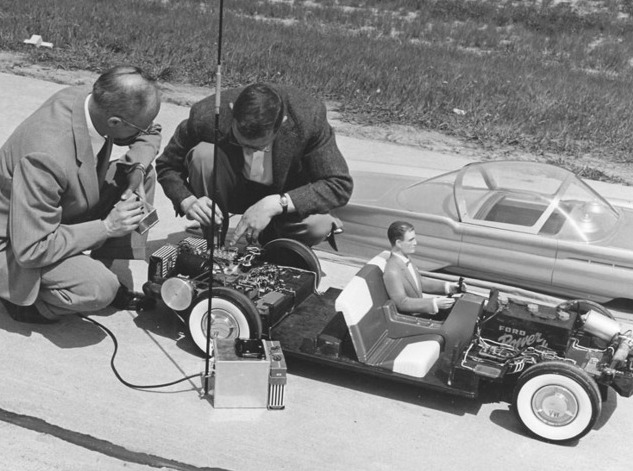
Concluded from Part 2. My Tremulis piece was published in full in The Automobile, March 2020.
Alex Tremulis in the 1950sWhen Kaiser left Willow Run, Alex Tremulis decided it was time to work for a company with a future. In Dearborn, Ford Chief of Design George Walker hired him with an unchanged job description: chief of advanced styling. There he joined Bob Thomas, who wrote warmly of him in 2008. “Alex thought he was back in the Army Air Corps, turning out scores of 3/8th scale models of futuristic things like flying cars and nuclear-powered vehicles.…
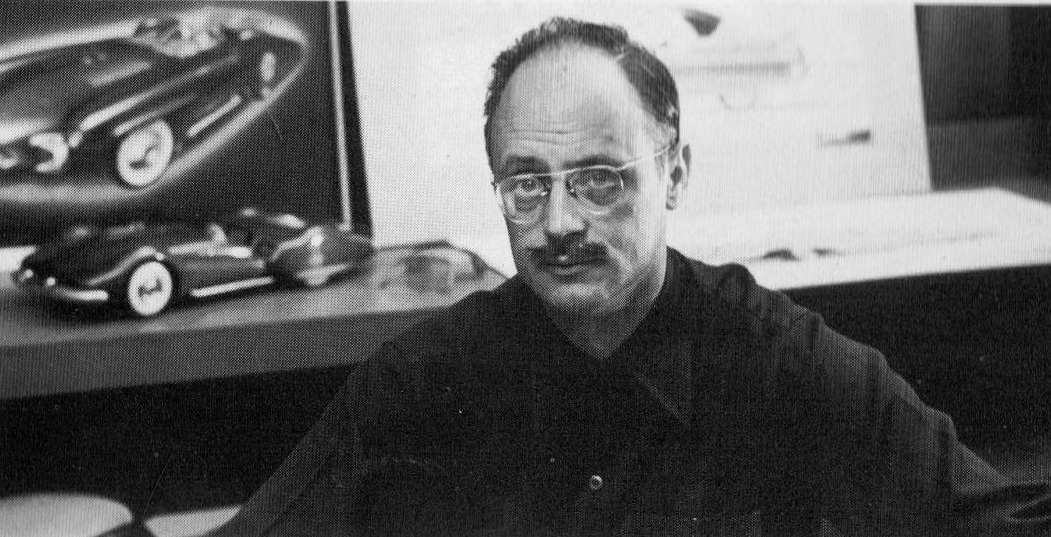
Continued from Part 1. My Alex Tremulis piece was published in full in The Automobile, March 2020.
Alex and TuckerLike Bob Bourke’s famous 1953 Studebaker “Loewy coupe,” the 1948 Tucker was almost entirely the work of one designer. Of course many helped, and both Bourke and Tremulis gave them credit. But as near as one comes to designing a car by oneself, they did.
Alex set to work in a studio at Tucker’s large, ex-Dodge plant in Chicago. As chief designer he had to inject practicality into Preston Tucker’s enthusiasm. First concepts included a car with cycle fenders that turned with the wheels, a periscope rearview scanner, and vast expanses of compound-curved glass.…
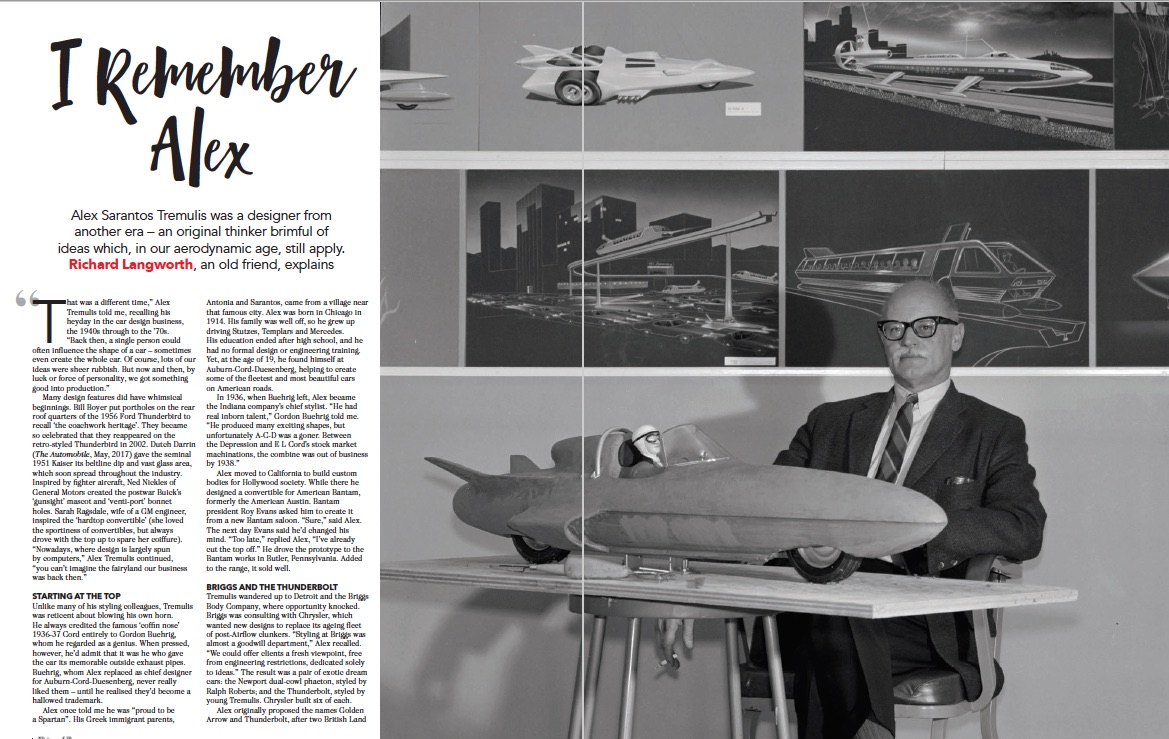
My Tremulis piece was published in full in The Automobile, March 2020.
“That was a different time,” Alex Tremulis told me, recalling his heyday in car design. “The Forties through the Seventies. Back then a single person could often influence the shape of a car. Sometimes the whole car. Of course, lots of our ideas were sheer rubbish. But now and then, by luck or force of personality, we put something good into production.”
Many famous automotive designs did have whimsical beginnings. Bill Boyer put portholes on the rear roof quarters of the 1956 Ford Thunderbird to recall “the coachwork heritage.”…
